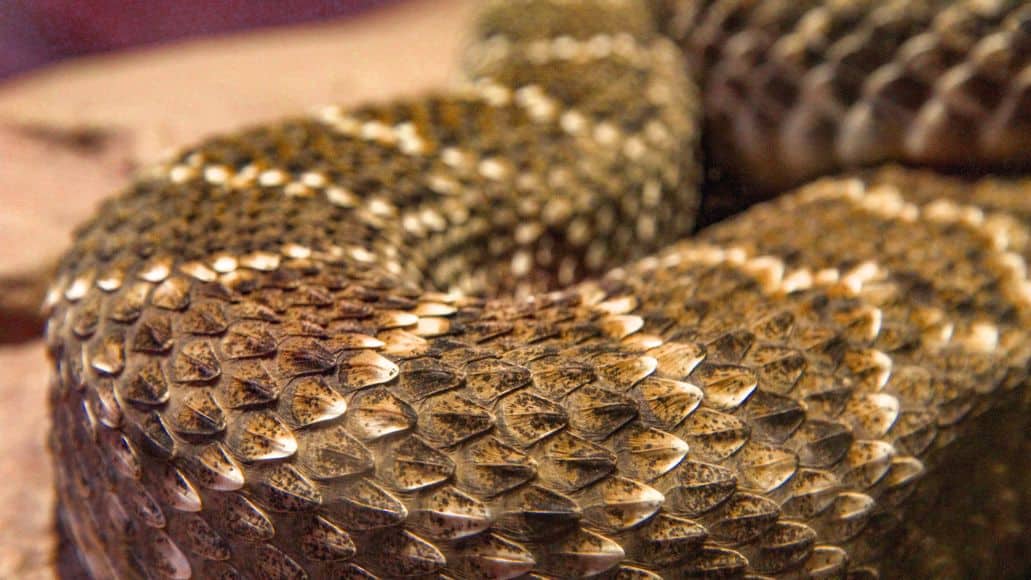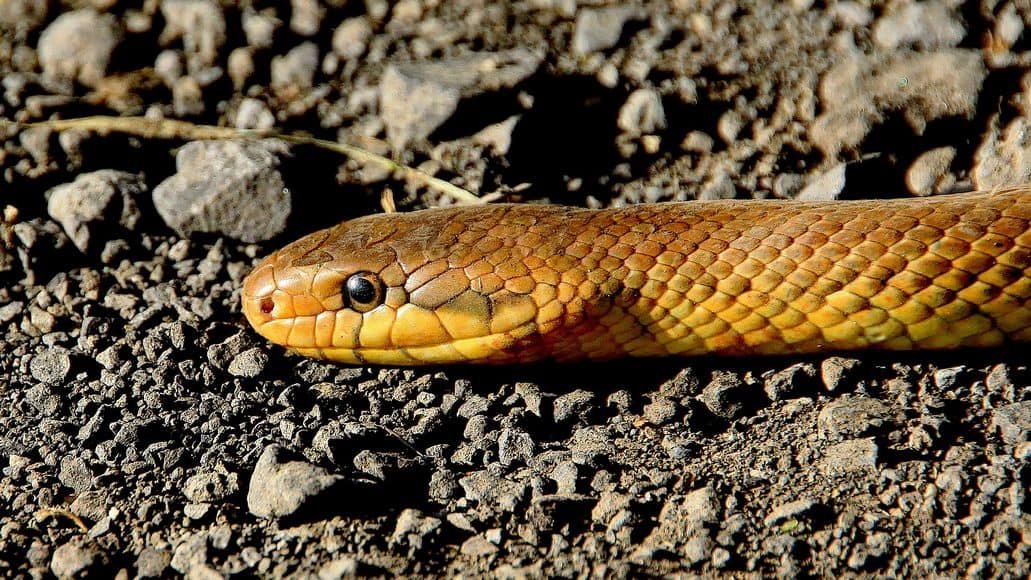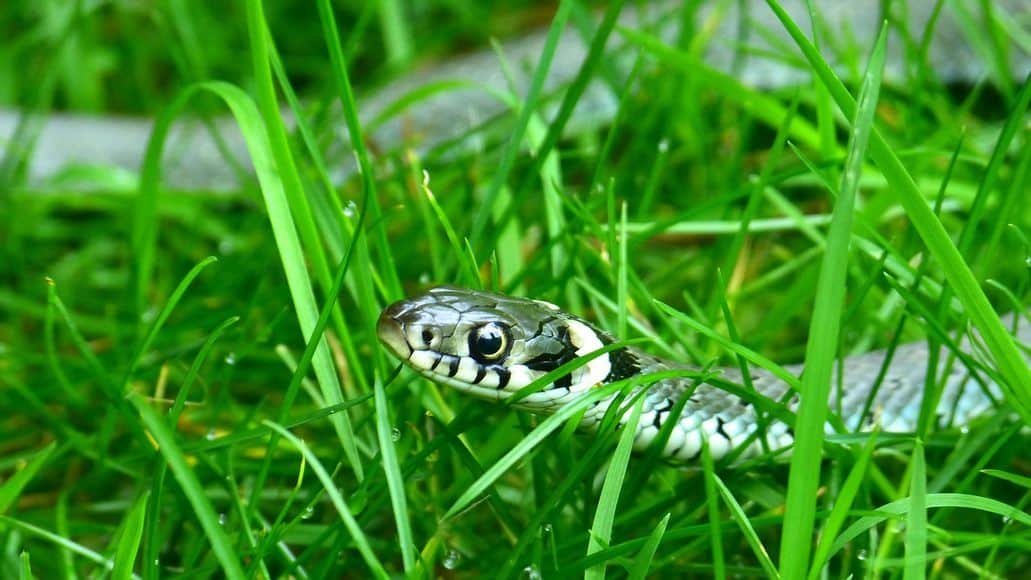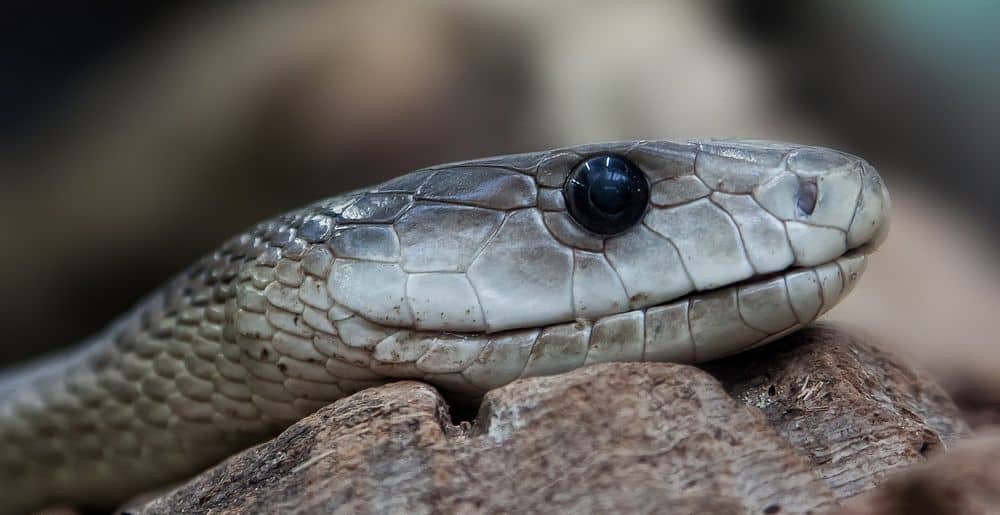
Or can you?
We’ve all seen the movie where some poor schmuck stumbles on a snake and tries to run away, only to have it fly across the ground and catch him.
Or one of the documentaries about the black mamba and its legendary speed.
But are there really snakes species that can outrun a human?
Despite not having any legs?
Let’s find out exactly how fast the fastest snakes can slither and whether it is fast enough to catch you (I think just about every snake could catch ME).
Table of Contents
How Fast Can A Snake Slither?
Snakes can move very quickly when startled or hunting but generally do not slither faster than a human can run.
That said, they slither surprisingly fast. Far faster than you’d expect, given they have no legs. They achieve this through a magnificent combination of muscle control friction.
Let’s get into more detail on how snakes move, before tackling the speed issue and looking at some of the world’s fastest snakes.
How Do Snakes Move?

The way snakes move is an incredible feat of nature. It looks eerie or supernatural as they glide along without any apparent mechanism to move forward.
But in fact, a snake’s body is an efficient machine built for movement.
Snakes are incredibly flexible with a long spine and up to 400 pliable ribs. The two critical ingredients to slithering are the snake’s muscles and scales. Let’s explore both a little more in-depth.
Muscles
Snake’s bodies are absolutely packed with muscles. Let’s compare.
The human body contains around 700-800 muscles. By contrast, even the smallest snakes have up to 20 times that many: somewhere between 10,000-15,000 muscles.
Scales

A snake’s body is completely covered in scales, rather than skin. Snake scales are made from keratin, which is the same material that makes up our fingernails and our skin and hair. The scales grip onto surfaces to propel snakes forward.
So how do muscles and scales work together?
The muscles alternately lift and lower the scales on the snake’s ribs and belly, pushing backward to glide the body forward, much like treads on a tire.
This movement is happening mostly underneath the snake, giving the illusion that snakes simply glide effortlessly across the ground.
Do All Snakes Move The Same Way?
Snakes use at least five different modes of movement: lateral undulation, sidewinding, concertina, rectilinear, and slide-pushing. Most snakes can employ at least two of these, if not all.
Lateral Undulation
The most common and recognizable motion, “lateral undulation” describes how snakes slowly curve their way back and forth.
Muscles move on one side and then the other, producing that recognizable “s” curve we think of when we picture snakes slithering.
Sidewinding

Only a few types of snakes employ sidewinding. This motion also creates an “s” curve, but the snake moves sideways or diagonally rather than forward.
Snakes commonly use this motion on slippery surfaces by anchoring parts of their body to the ground and lifting and placing other parts ahead in a curving sideways action.
Concertina
You can think of this like an accordion. Burrowing or climbing snakes use this type of motion, first bunching up the body into loops, then stretching out their front part and pulling the rear after it to bunch up again.
Rectilinear
This means what it sounds like – a straight line! Scientists are beginning to study some larger snakes that don’t have to move in the characteristic “s” shape.
These snakes, like vipers, pythons, anacondas, and boa constrictors, can use the softer belly scales to push all at the same time, moving in a single straight line.
Slide-pushing
This is sort of a hybrid of the first two and tends to occur when a snake is startled or caught on a slippery surface. Snakes can exert massive force on their head and tail to hold them in place and use them to lift and slide the middle of their bodies sideways.
So How Fast Can A Snake Slither?

The internet – and our childhood stories – are full of misinformation about how fast snakes can move.
Some rumors about the black mamba state it can slither faster than a running horse!
No worries, that’s definitely a myth.
Snakes are not naturally aggressive and prefer to be left alone. They tend to spend long hours resting or sunning themselves and not moving quickly unless distressed or hunting.
While snakes can strike at unbelievably high speeds, they tend to slither at more of a walking pace. Snakes have slow metabolisms and can live for long periods without the need to hunt
So unless startled, snakes tend to move more slowly than we might typically think.
Can You Outrun A Snake?
While most snakes move reasonably slowly through an average day, some snakes can move quite fast, especially in short spurts.
The fastest snakes can reach speeds of 12-18 miles per hour in short bursts. For comparison, the average human jogger moves at eight miles per hour.
While some of the fastest snakes may maintain a speed of about eight miles per hour over longer distances, most are much slower.

You can probably outrun most snakes if you can keep up a good pace for a long stretch.
However, if you encounter a snake in the wild, most experts advise you to stop and back away slowly. You don’t want to find out how fast it is!
Fastest Snakes
Let’s look at the three fastest snake species: the sidewinder, the black mamba, and the southern black racer.
Sidewinder
The sidewinder is a type of rattlesnake named for its specific and rare form of movement. It is the fastest snake in the world.
Sidewinders can move up to 18 miles per hour! Sidewinders are native to the desert regions of North and Central America.
In addition to its speed, the sidewinder’s movement itself can shock observers, because it moves sideways, creating a signature pattern in the sand.
Black Mamba

The black mamba may be the most famous of the speedy snakes, thanks to former NBA star Kobe Bryant adopting the moniker.
Clocking in at a max of 12 miles per hour, its combination of speed and highly toxic venom win it a spot on the list of most dangerous animals in Africa and our own list of deadly venomous snakes.
The black mamba – which isn’t usually black but more tan or brown – generally moves with the typical “s” curve lateral undulation.
Southern Black Racer
The speed is in the name! This snake can slither up to ten miles per hour. Another native to the United States, the southern black racer reaches high speeds on both ground and in water.
The black racer is a prevalent species in the Southeastern United States and is not venomous. They are usually relatively small and light, contributing to their agility and speed.
Snake Speed: Final Thoughts
The good news is: a fast human can always outrun a fast snake. But I guess that’s only good news for fast humans. A fast snake could definitely catch me.
But most snakes aren’t that fast, and I would like to think I could get away from the majority of them. And since the fastest snakes don’t live where I live, I’m good. Snakes also can’t jump or fly, despite what some might tell you.
More importantly, snakes generally want to avoid us, not chase us down, despite what Hollywood might want us to believe. So if you stumble on a snake, don’t turn and run. Try to stay calm and back away slowly. The snake will be more than happy with that resolution, too.
Leave a Reply